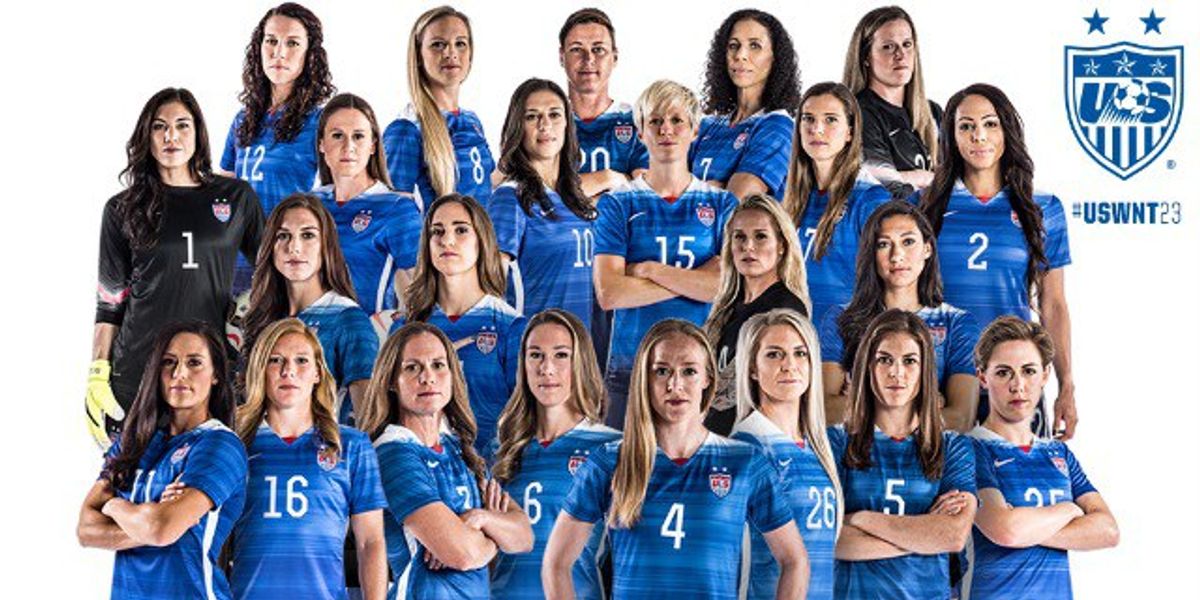There is nothing ironic about Carli Lloyd's astonishing final match hat trick or Hope Solo's fantastic goalkeeping throughout the World Cup tournament, as these women, along with their teammates, trained like animals to prepare for this single moment in their careers. The irony lies in the jerseys these athletes donned as they took their victory lap — good ol' red, white and blue.
Unless you're thinking of England, where the sport originated, these aren't the first colors that come to mind when thinking of soccer powerhouse nations — Germany, Italy, Brazil — places where fans live and breathe the sport. Stadiums sell out, and riots start over wins, losses and rivalries.
While America continues to boast talented athletes who can hold their own at the international level, our country's fan base just cannot hold a candle to the popularity that is seen throughout the rest of the world. So, why is it that soccer just can't quite reach this level?
Soccer was never intended to be popular.
Think about the two most popular American sports. Now think about their distant cousins — rugby to football and cricket to baseball. Since the beginning, America has strived to distinguish itself. I mean, c'mon, if we're not going to use the metric system, why would we encourage one of the most "Old World" sports?
There is little room for a next major league sport.
The marketplace for major league sports is crowded. Between the NFL, MBA, NBA, and NHL, everyone wants a piece of the pie. Major League Soccer (MLS) has been able to snag a nice slice, but let's face it, soccer is just less lucrative to those with buying power. In all other popular American sports, clocks are stopped constantly. Innings, quarters, and periods create the perfect framework for commercial advertising, and soccer's sole half-time does little to attract the capitalistic investor.
With that being said, many Americans find the long period of soccer's "senseless running" boring. Football, hockey, basketball, and even baseball, provide more excitement to the average American viewer. Points scored are higher, attempts at goals more frequent and physical contact is greater. This is the fast-paced, instant gratification we Americans seek.
If we can't beat 'em, why bother?
The highest-scoring athletes during any given World Cup tend to hail from European or South American nations. No matter how high the U.S. team places, ultimately, Americans love their stars. We idolize celebrities and build huge franchises around single household names, but when fans begin to realize the most accomplished, well-known athletes are not American, they lose interest.
However, could the women's most recent World Cup win be the final push to turn Americans around? The third time really could be the charm ...
Youth involvement is steadily increasing.
In 1974, U.S. Youth Soccer registered just over 100,000 players. Last year, that number has grown to over 3 million. Furthermore, The Huffington Post said ESPN reported "30 percent of American family households have at least one member who plays soccer." In addition to an increase in players, fans have grown in number at a similar rate. According to The Huffington Post, "average attendance rates at MLS games now rival those of the NHL and NBA."
Our demographic is shifting to a pro-soccer nation.
As the Hispanic population increases, with expectations to make up a third of the country by 2050, immigrants bring along with them not just their hopes and dreams for a new life, but their old, cherished culture — one that revolves around soccer.
Similarly, soccer has become a growing interest among 18- to 24-year-olds. This is a huge nudge to advertisers who may have been reluctant about investing in the MLS.
100 million strong is a 100 million strong.
During last year's World Cup, a Reuter's poll suggested a third of the United States, a whopping 100 million persons, would follow the weeks-long tournament. Despite this number being less than a majority, 100 million is not a weak projection. This number is, as pointed out by U.S. National Soccer Player's contributor Jason Davis, the combined populations of Argentina, Portugal and England — surely a large enough crowd to make an impact.
While I was a mere three years old last time the U.S. Women's National Team reigned as World Cup champions, it is obvious the recognition and praise have been greater the third time around. The team received its first ever New York ticker tape parade and even a call from President Barack Obama. If New York and POTUS can embrace a soccer-loving America, I think the rest of us can give it a shot.



















